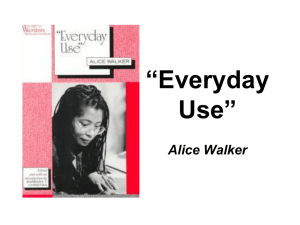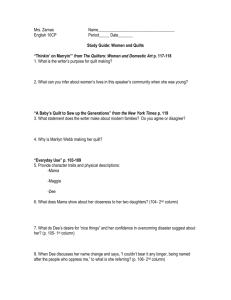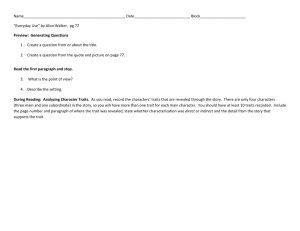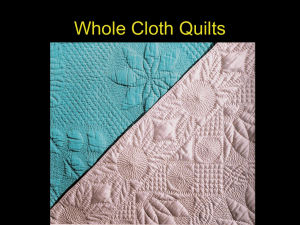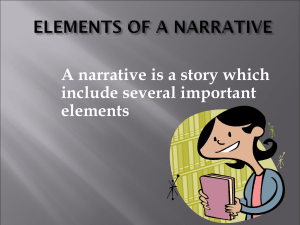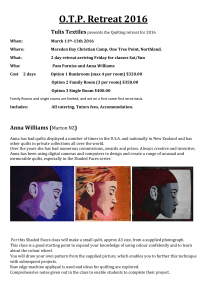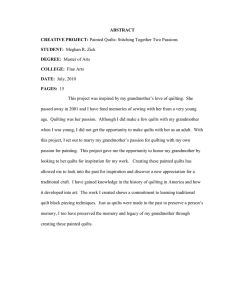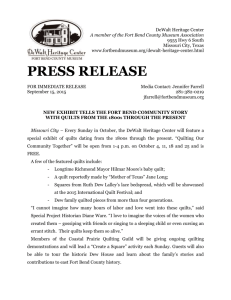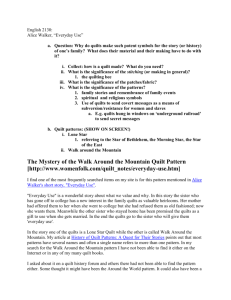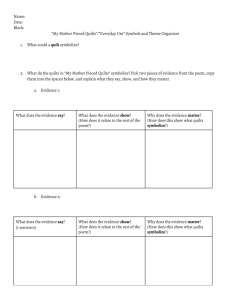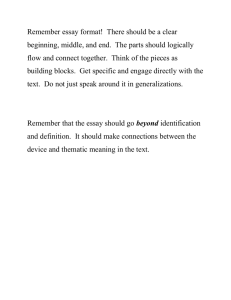Alice Walker} on Quilting
advertisement
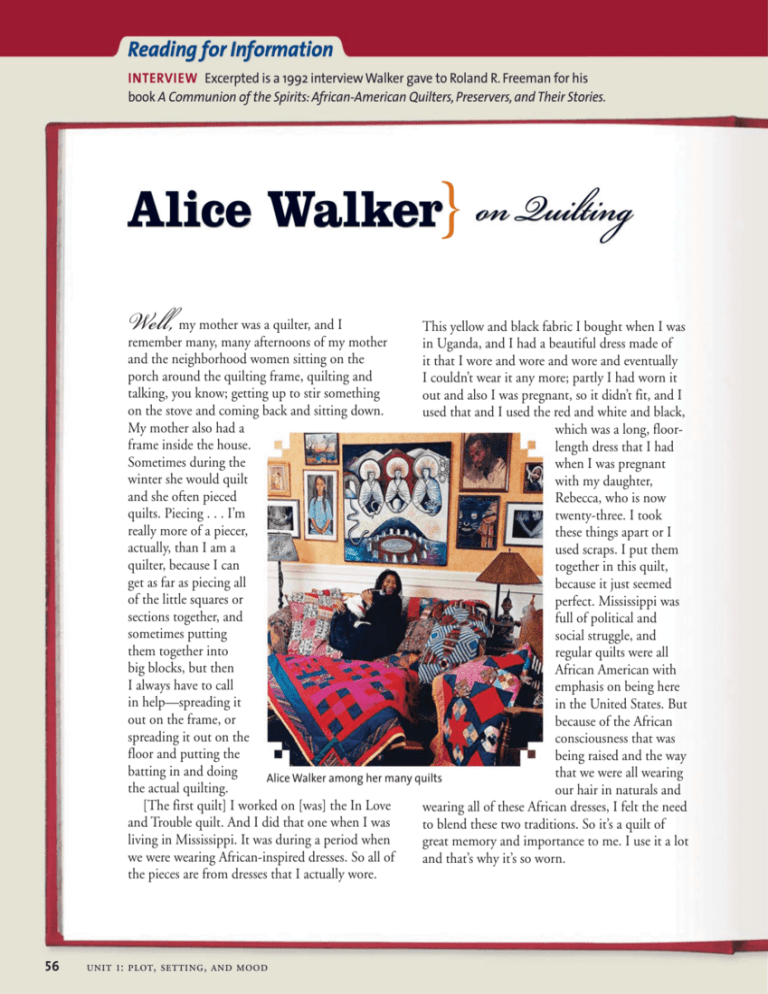
Reading for Information INTERVIEW Excerpted is a 1992 interview Walker gave to Roland R. Freeman for his book A Communion of the Spirits: African-American Quilters, Preservers, and Their Stories. Alice Walker} on Quilting Well, my mother was a quilter, and I This yellow and black fabric I bought when I was remember many, many afternoons of my mother in Uganda, and I had a beautiful dress made of and the neighborhood women sitting on the it that I wore and wore and wore and eventually porch around the quilting frame, quilting and I couldn’t wear it any more; partly I had worn it talking, you know; getting up to stir something out and also I was pregnant, so it didn’t fit, and I on the stove and coming back and sitting down. used that and I used the red and white and black, My mother also had a which was a long, floorframe inside the house. length dress that I had Sometimes during the when I was pregnant winter she would quilt with my daughter, and she often pieced Rebecca, who is now quilts. Piecing . . . I’m twenty-three. I took really more of a piecer, these things apart or I actually, than I am a used scraps. I put them quilter, because I can together in this quilt, get as far as piecing all because it just seemed of the little squares or perfect. Mississippi was sections together, and full of political and sometimes putting social struggle, and them together into regular quilts were all big blocks, but then African American with I always have to call emphasis on being here in help—spreading it in the United States. But out on the frame, or because of the African spreading it out on the consciousness that was floor and putting the being raised and the way batting in and doing that we were all wearing Alice Walker among her many quilts the actual quilting. our hair in naturals and [The first quilt] I worked on [was] the In Love wearing all of these African dresses, I felt the need and Trouble quilt. And I did that one when I was to blend these two traditions. So it’s a quilt of living in Mississippi. It was during a period when great memory and importance to me. I use it a lot we were wearing African-inspired dresses. So all of and that’s why it’s so worn. the pieces are from dresses that I actually wore. 56 unit 1: plot, setting, and mood After Reading Comprehension 86A>;DGC>6 1. Recall How has Dee changed when she arrives to see her family? 2. Recall Why does Dee want the quilts? 3. Recall Who gets the quilts at the end of the story? 4. Summarize Why does Dee think Mama and Maggie don’t understand their heritage? Literary Analysis R3.3 Analyze interactions between main and subordinate characters in a literary text (e.g., internal and external conflicts, motivations, relationships, influences) and explain the way those interactions affect the plot. R3.4 Determine characters’ traits by what the characters say about themselves in narration, dialogue, dramatic monologue, and soliloquy. 5. Make Inferences Review the notes you took as you read. What positive and negative traits does each character have? 6. Compare and Contrast What makes the quilts valuable to Dee, and what makes them valuable to Maggie? Cite evidence. 7. Analyze Plot Reread lines 264–269. Explain why Mama makes the choice she does at the climax of the story. How does she feel about her choice? 8. Analyze Conflict Use the chart shown to explore the various ways that Dee is in conflict with her family. Which conflicts are resolved and which are not? wants quilts Dee want Maggie to have quilts Mama Maggie 9. Interpret Theme What do you think Alice Walker is saying in “Everyday Use” about the nature of heritage? Support your answer. 10. Synthesize How do Walker’s comments about quilting on page 56 affect your understanding of “Everyday Use”? Literary Criticism 11. Historical Context The story takes place in the late 1960s, a time of growing cultural awareness for African Americans. If the story were set in the present, would the conflicts within the family be different? Explain your answer. everyday use 57
